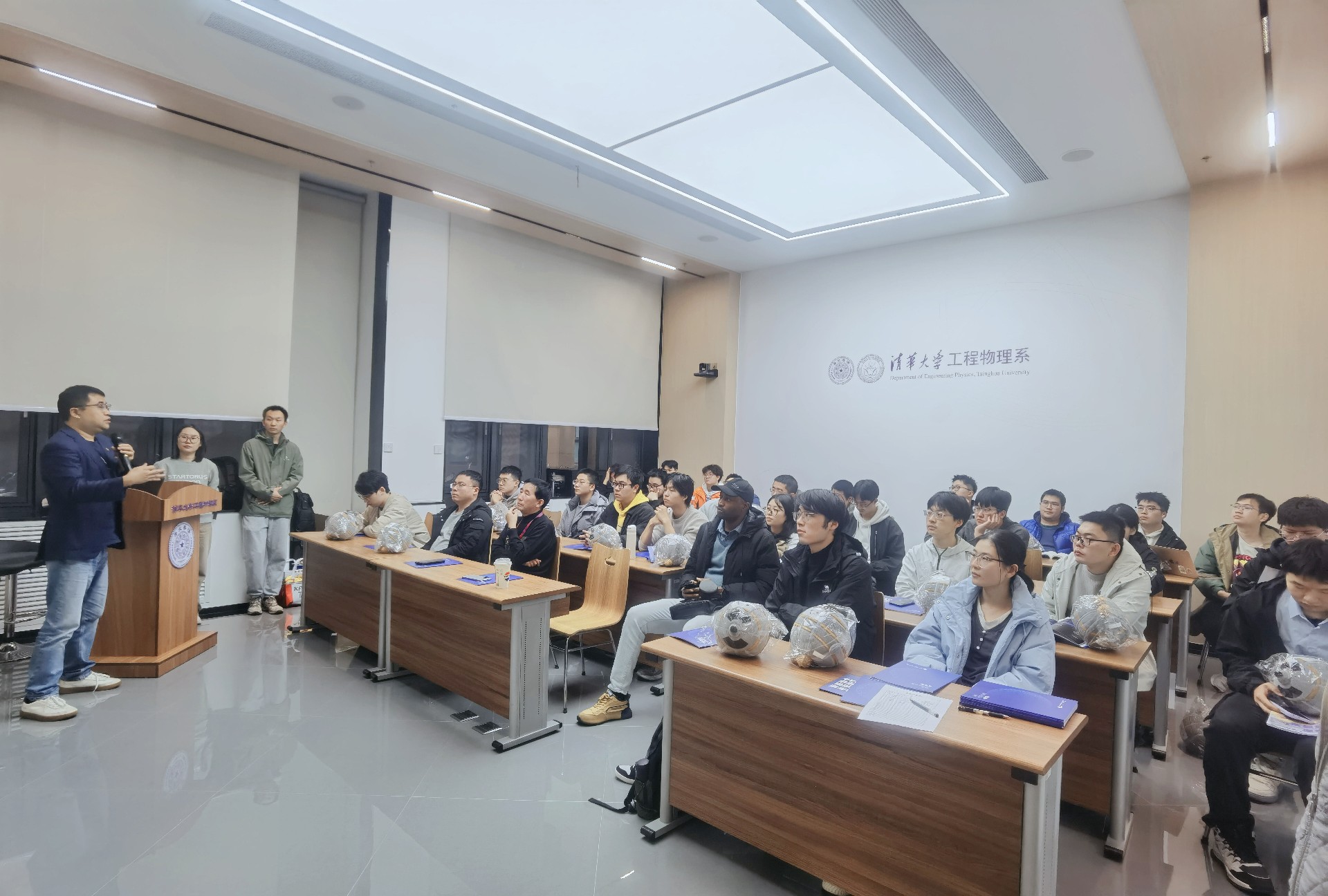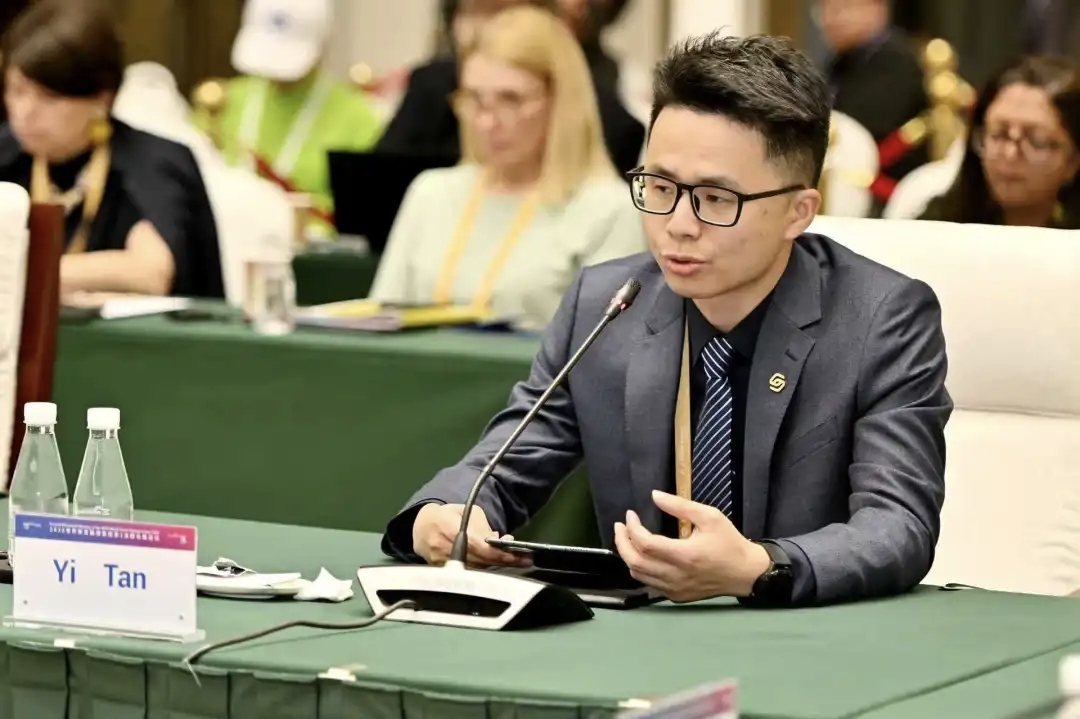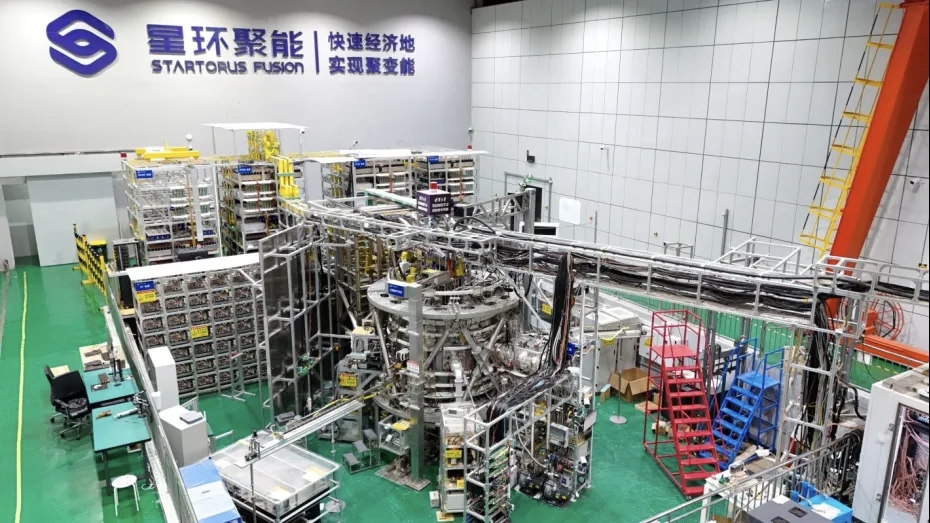Recently, Chen Rui, CEO of Startorus Fusion, was interviewed by DeepTech. He systematically expounded the key path of controllable nuclear fusion from scientific verification to commercial development, and deeply analyzed the original technology route and development plan of Startorus Fusion. The company’s original high-temperature superconducting spherical tokamak repetitive reconnection controllable fusion scheme is expected to promote the “artificial sun” towards miniaturization and economization. At the same time, the pilot apparatus Startorus 1, which is being planned and constructed by Startorus Fusion, will aim at achieving fusion reaction conditions continuously and stably and achieving complete engineering verification.
The following is the report from DeepTech:
Controllable nuclear fusion is considered to be the “crown jewel” in the field of energy. Fusion energy is abundant in raw materials, and its production process has almost zero carbon emissions. People hope to obtain unlimited supply of clean electricity in this way.
Since the 1950s, people have tried various methods to achieve nuclear fusion conditions, and now the development of fusion industry is remarkable. According to the data of the Global Fusion Industry 2025 report released by the American Fusion Industry Association (FIA) in July 2025, the global fusion industry has shown explosive growth in the past five years, with 53 nuclear fusion companies in the world. The total investment reached 9.77 billion US dollars, five times higher than the total investment in 2021. Among them, the investment increased by 2.64 billion US dollars last year alone.
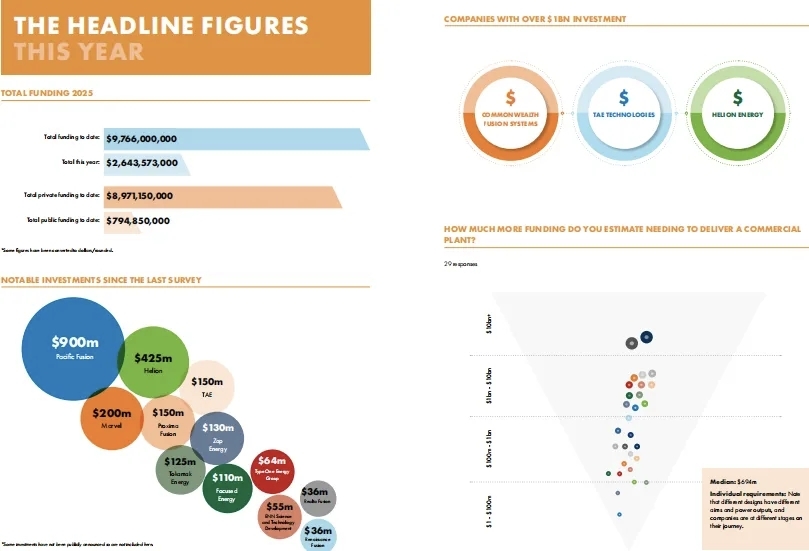
Figure|Data on Nuclear Fusion Industry Financing in Global Fusion Industry 2025 (From: FIA)
So where is nuclear fusion now? How close are we to truly power-generating fusion?

Controllable Nuclear Fusion: From Scientific Verification to Commercial Development
Let’s make a simple comparison: if two technologies based on coal and nuclear fusion respectively can each generate 1 million kilowatts of electricity, coal-fired power plants need to consume about 1.4 million tons of coal, while nuclear fusion apparatus need only about 0.6 tons of deuterium-tritium fuel under ideal energy output conditions according to theoretical calculations. Converted to our common 330-milliliter Coke bottle, the fusion fuel of 1,200 bottles of Coke is enough to support the output of a million-kilowatt power plant.
Among the known fusion reactions, the deuterium-tritium reaction is the least difficult and most mature way to achieve. Deuterium and tritium are two isotopes of hydrogen, of which deuterium can be extracted cheaply from seawater and is extremely abundant, while tritium can be produced by the reaction of neutrons with lithium. In order to achieve deuterium-tritium fusion reaction, the fuel in plasma state needs to be heated to a very high temperature of about 100 million degrees Celsius (if other substances such as hydrogen and boron are fused, higher ion energy is needed). In this environment, the nuclei of deuterium and tritium will overcome the Coulomb repulsion and fuse to form a helium nucleus and release a neutron, releasing huge amounts of energy in the process.
Conventional fusion heating methods usually rely on external heating, similar to “boiling water”, that is, adding a circle of energy injection equipment outside the apparatus, such as neutral beam injection (injecting high-energy neutral atoms into plasma), ion cyclotron heating (accelerating ions by high-frequency electromagnetic waves), etc., to inject high-energy particles into the plasma to enhance the energy of the internal particles through collision and energy conversion.
Since the 1990s, magnetic confinement fusion apparatus such as Joint European Torus (JET) and the United States Tokamak Fusion Test Reactor (TFTR) have successfully achieved tens of megawatt fusion power output in a short time in the experiment, which verifies the scientific feasibility of deuterium-tritium fusion energy. Since 2021, the National Ignition Facility (NIF) has successfully achieved continuous net energy gain, and has produced fusion energy equivalent to 1 kilowatt-hour on the laser fusion apparatus for many times.
In recent years, top journals such as Nature and Science have published results proving that AI can significantly improve the confinement capability and magnetic field strength of nuclear fusion apparatus. Therefore, the integration of AI and nuclear fusion is also one of the ways to improve efficiency and accelerate development. What needs to be understood is that although the scientific feasibility of nuclear fusion has been verified one after another, only “ignitable” is not enough for continuous power generation. How to achieve continuous and stable high energy of plasma heating and achieve high confinement conditions through engineering methods is still a thorny problem at this stage.
Fusion energy is becoming a key area of competition among big powers. The United States regards fusion energy as a key technology related to its dominant position in the 21st century. In 2023, the U.S. Department of Energy’s “Milestone Fusion Development Program” allocated $46 million to eight nuclear fusion enterprises to promote the development of commercial fusion energy. China also supports the development of nuclear fusion in terms of laws and policies. the Atomic Energy Law of the People’s Republic of China, adopted on September 12 this year, explicitly mentions that the national level encourages and supports the research and development of controllable nuclear fusion, scientific research and technological development.
In addition to investment and support from the national level, commercial companies are also a force to be reckoned with. In recent years, the global nuclear fusion field is maintaining a strong momentum of development. From the point of view of technical realization paths, it mainly includes magnetic confinement paths (tokamak, stellarator and field inversion) and laser inertial confinement paths. The realization of commercial nuclear fusion needs to meet three constraints: the confinement capacity of the apparatus, the magnetic field strength and the size of the apparatus.
For a long time in the past, human beings have not really improved their confinement ability and magnetic field strength, which means that nuclear fusion can only be achieved by increasing the size of the apparatus. For example, International Thermonuclear Experimental Reactor (ITER) is a fusion apparatus with a diameter of about 30 meters and a height of 30 meters. It is jointly invested by China, the United States, Russia, the European Union, India, Japan and South Korea, with a budget of up to 20 billion US dollars. The actual construction began in 2010 but has not yet been completed.
With the development of technology, it is possible to reduce the size of fusion apparatus by engineering means, which can greatly reduce capital investment and shorten the construction cycle. We take Commonwealth Fusion Systems (CFS), Helion Energy and Tokamak Energy as examples to sort out the development of nuclear fusion commercialization companies.
CFS, an American nuclear fusion company, was separated from MIT Laboratory in 2018 and operated independently. It uses a compact magnetic confinement tokamak apparatus SPARC to make high-temperature superconducting materials into magnets and apply them to nuclear fusion experimental apparatus. In August, CFS received $863 million in its latest round of financing from investors including Nvidia’s venture capital department NVentures, Google and Bill Gates’ Breakthrough Energy Ventures. So far, the company has raised about $3 billion. CFS also signed a $1 billion-plus fusion power deal with Italy’s Eni, the global oil and gas giant, in September.
Helion Energy, an American nuclear fusion company, was founded in 2013. Its technical route is field inversion, which generates energy through kinetic energy conversion and impact process, and has the function of direct power recovery. In 2021, the company claimed that based on the sixth generation Trenta apparatus, the plasma temperature reached 100 million degrees Celsius, and the fusion generator prototype could run continuously for 16 months. In 2023, Helion Energy reached an agreement with Microsoft to provide fusion power support for the latter in 2028. In July this year, the company launched a fusion power plant construction project in Washington State, USA. The company is currently working on a seventh-generation prototype, the Polaris. Helion Energy completed a $425 million F round of financing in January 2025 and received support from OpenAI CEO Sam Altman and Softbank Venture Capital, with the company’s latest valuation reaching $5.425 billion.
Tokamak Energy, a British nuclear fusion company, was established in 2009 as a subsidiary of the British Atomic Energy Authority, and in 2019, a subsidiary of the United States Tokamak Energy Inc was established. Its technical route is based on spherical tokamak and high-temperature superconducting magnet, which can enhance plasma confinement by improving the performance of the magnet. In 2022, its spherical tokamak apparatus ST40 achieved a plasma ion temperature of 100 million degrees Celsius. So far, the company has raised $335 million, including $275 million from private investors and $60 million from the British and U.S. governments.
Although the operation mechanism of nuclear fusion industry is different among countries, they are all actively moving towards the goal of early realization of fusion power generation. Now we focus on China’s nuclear fusion market, where a “2+N” industrial development framework has been formed. 2 refers to the nuclear fusion “national team” enterprises, namely, Fusion New Energy in Hefei, Anhui Province and China Fusion Energy in Shanghai, which have received nearly 30 billion yuan of financial support in the past two years. N refers to other nuclear fusion commercialization companies, such as New Austria Energy and Startorus Fusion with Spherical Tokamak as the technical route, Energy Singularity with Tokamak as the technical route, HH-MAX ENERGY with field inversion as the technological route, etc.
Not long ago, MIT Technology Review released the new “50 Smart Companies” selection, and Startorus Fusion was one of the candidates for “Explorer of Miniaturized and Controllable Nuclear Fusion Applications”. So, what are the unique technological innovations of this start-up company, which has been established for four years and has completed two rounds of accumulated financing of hundreds of millions of yuan? DeepTech and Chen Rui, founder and CEO of Startorus Fusion, have seen the vitality of China’s nuclear fusion field and the possible new situation of future development through the exchange of technological paths, innovations and existing achievements.

Miniaturize and Economize the “Artificial Sun” with Original Technical Solutions
The SUNIST, a scientific and technological achievement of Tsinghua University, has chosen a differentiated route——“Make Tokamaks Simple Again”. It has developed a unique repeated reconnection controllable fusion operation scheme: based on the miniaturized nuclear fusion apparatus with high-temperature superconducting strong magnetic field, the plasma is continuously “ignited” and reciprocated to do work in the form of short pulses of about 6 seconds each time by means of magnetic reconnection heating. “The core goal of our company is to engineer the complete operation scheme of the first controllable fusion”. Chen Rui said in an interview with DeepTech.
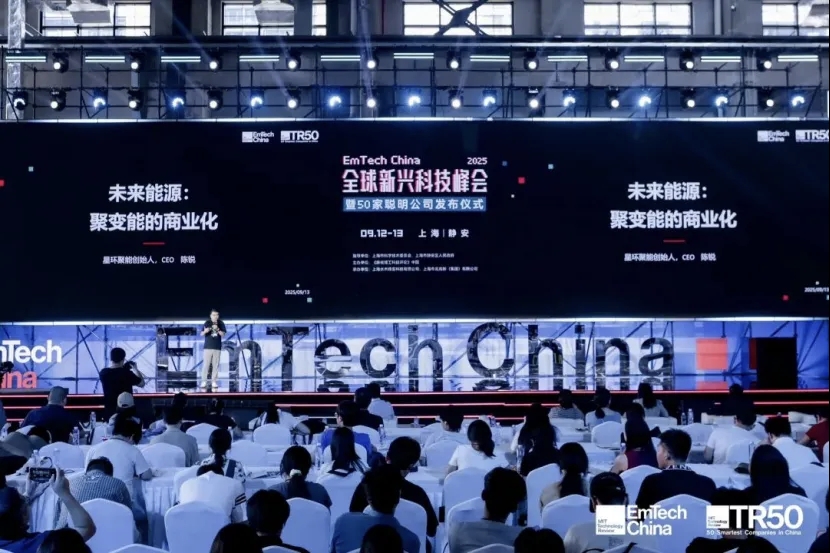
Figure|Chen Rui’s Speech at EmTech China 2025 (From: DeepTech)
The innovative technical route scheme of Startorus Fusion reduces the size of the apparatus to 8 meters in diameter and 10 meters in height, greatly simplifies the structure of the apparatus, significantly reduces the overall construction cost of the nuclear fusion apparatus and shortens the construction cycle. Specifically, the magnetic reconnection heating scheme boldly omits an external heating apparatus, and uses the magnetic field generated inside the plasma to convert the magnetic energy into the heat energy of the plasma, so as to heat the plasma to the fusion reaction temperature quickly and efficiently.
In the aspect of plasma confinement, the traditional tokamak apparatus faces the problem of rapid cooling after heating the plasma to high temperature. Therefore, in order to make it run stably, it must be heated continuously to maintain a high temperature state.
Startorus Fusion adopts multi-stroke continuous working mode similar to automobile engine to replace the traditional Tokamak’s pursuit of continuous and stable operation. By heating the plasma to a high enough temperature at one time, as long as it can react at that temperature for a few seconds, the energy generated is considerable. Then the heating is stopped, and the next heating is carried out after natural cooling. This scheme uses continuous pulse operation mode, which skillfully avoids the problem of long time stable confinement of plasma.
For future fusion power plants, the core cost is the cost of construction and operation and maintenance. Chen Rui said frankly: “The cost of the same type of nuclear fusion apparatus that achieves scientific energy gain (Q>1) is about several billion to tens of billions of yuan, while the construction cost of our scheme is about 1 billion yuan, which provides a nuclear fusion scheme with both miniaturization and economy for the field”.
Judging from the company’s progress, it has completed basic research exploration and preliminary engineering verification (small-scale test), and created the world’s fastest spherical tokamak construction record. Chen Rui said that the team size was 50 people at that time, and they completed the construction of the first small-scale test apparatus SUNIST-2 in only 279 days “from 0 to 1”, achieving plasma temperature of 17 million degrees Celsius. In the subsequent development, the plasma current was also rapidly increased from 100 ka to 480 ka. It is noteworthy that the preliminary verification of the repeated reconnection scheme has been completed after only 11 months of operation. According to reports, this apparatus reached the highest level of similar spherical Tokamak nuclear fusion apparatus in China at that time.
In our communication, Chen Rui emphasized many times that nuclear fusion is an engineering problem, which can also be confirmed by the team structure of Startorus Fusion. At present, there are more than 170 people in the team of Startorus Fusion, including more than 140 R&D team members, and engineers account for the majority. The team of scientists in nuclear physics and plasma physics has more than 30 PhDs, more than half of whom come from Tsinghua Laboratory. In addition to solving scientific problems and carrying out research and development, the team of scientists also has a key task to split the physical problems of fusion into specific engineering problems and indicators, so as to improve the overall operational efficiency by enabling engineers to better understand the related work, including mechanical engineering, electronic engineering, strong and weak electricity, information engineering and optics.
At present, the company is planning to build a pilot apparatus, Startorus Fusion 1, with the core goal of achieving continuous and stable fusion reaction conditions and complete engineering verification.
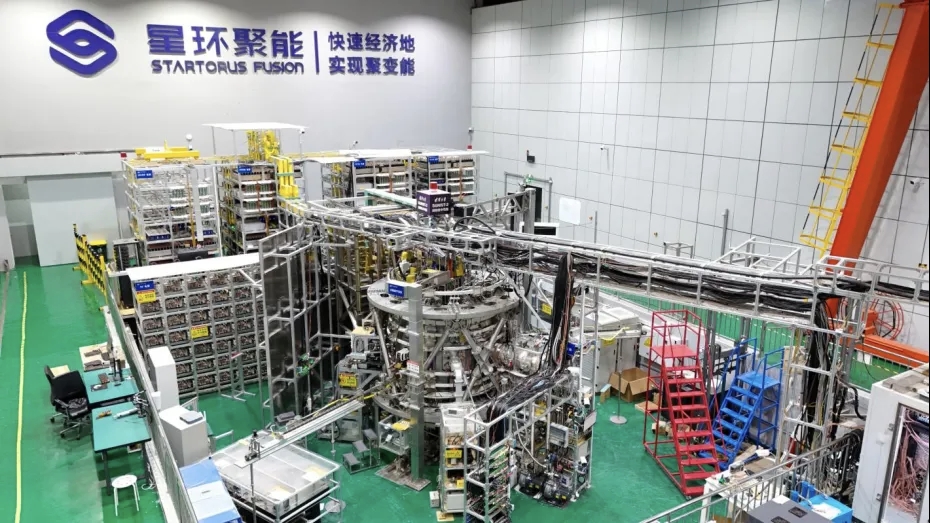
Figure|SUNIST-2:A Small-scaled Test Apparatus for Startorus Fusion (From: Startorus Fusion)
It is understood that the nuclear fusion fuels currently used in Startorus Fusion are deuterium and tritium, which is also the most economical choice for a commercial company to consider comprehensively. “Although there are other companies using hydrogen boron as nuclear fusion fuel, our principle is that ‘steel should be used on the edge of the knife’, so we still choose the least difficult deuterium-tritium fusion at present, and try hydrogen boron when the technology is more mature in the future”, Chen Rui said. He hopes to control the total cost of mass production of poly substation within 10 billion yuan in 10 years.
Although the development prospects are very good, one problem that can not be ignored is that nuclear fusion is a project that requires a long time and heavy investment. As a commercial company, how to make the enterprise have the ability of “hematopoiesis” for sustainable survival is also very important. Startorus Fusion uses “multi-legged walking”——through the commercial output of magnets and nuclear electronics, it has achieved a revenue of tens of millions of yuan in 2024.
Speaking of the nuclear fusion “competition” between China and the United States, Chen Rui pointed out that the United States has a lot of technological accumulation and first-mover advantages in the field of nuclear fusion, but China has also developed very rapidly in nuclear fusion in recent years. “I think China has a chance to compete with the United States in this field, and even has a better chance of winning. The key is whether we can find a suitable nuclear fusion engineering scheme by filling up the shortest board like the barrel principle”.
So, how far is it from nuclear fusion that can really generate electricity? According to Global Fusion Industry 2025 report by FIA, it is predicted that the time of fusion power generation will be concentrated in 2031-2035. Looking forward to more key breakthroughs and progress in the field of nuclear fusion, let’s wait and see that fusion power generation will become a reality as soon as possible.
Reference Materials:
1.https://www.fusionindustryassociation.org/over-2-5-billion-invested-in-fusion-industry-in-past-year/
2.https://www.reuters.com/business/energy/helion-energy-starts-construction-nuclear-fusion-plant-power-microsoft-data-2025-07-30/
3.https://www.helionenergy.com/articles/announcing-helions-425m-series-f/
4.https://www.reuters.com/business/energy/us-nuclear-fusion-builders-fired-up-by-big-tech-investments--reeii-2025-09-16/?utm_source=chatgpt.com
5.https://science.house.gov/2025/9/opening-statement-of-chairman-brian-babin-at-energy-subcommittee-hearing?utm_source=chatgpt.com
6.https://tokamakenergy.com/about-us-fusion-energy-high-temperature-superconducting-magnets/
7.https://www.helionenergy.com/articles/helion-energy-achieves-100-million-degrees-celsius-fusion-fuel-temperature-and-confirms-16-month-continuous-operation-of-its-fusion-generator-prototype/?utm_source=chatgpt.com
Link to the original report:https://mp.weixin.qq.com/s?__biz=MzA3NTIyODUzNA==&mid=2649780426&idx=2&sn=894e334b7eb95e0ec068dff2b8cbe868&scene=21&poc_token=HOX78WijFycdF1QUegJKbhyYXo4xPGw3x_cQz-Sx


